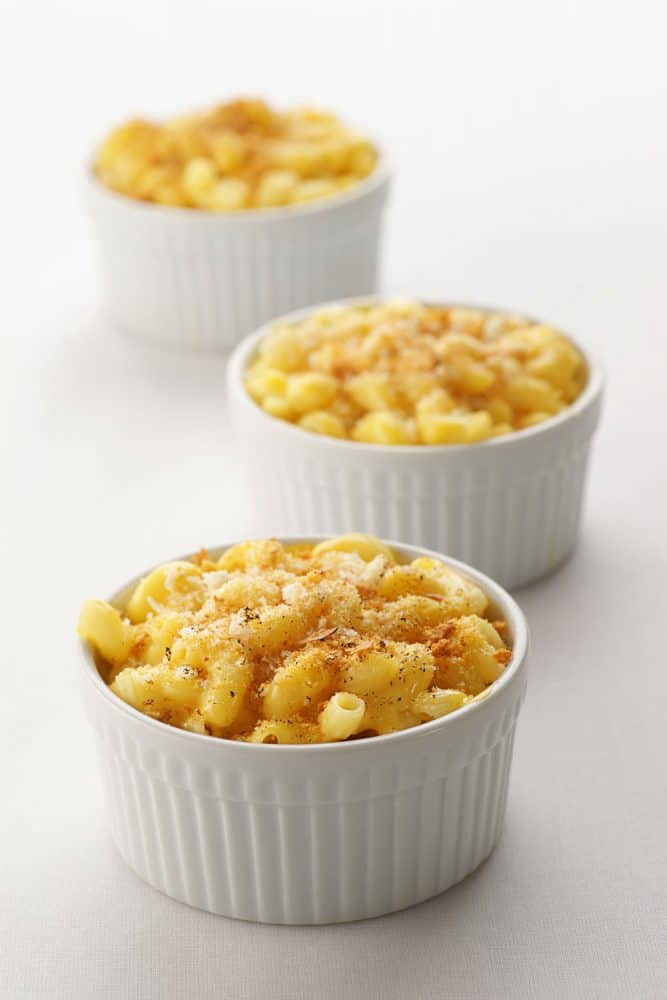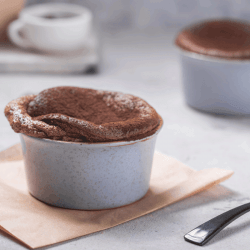Ramekins are perfect for making individual-sized portions of food. However, a lot of people don't know how versatile they can be. For instance, can you cook eggs in a ramekin? We've seen what the foodies have to say about this.
Yes, you can cook eggs in a ramekin. In fact, there are special egg recipes that work out really well in ramekins. For example, a "shirred" egg is an egg cooked in a ramekin with cream. You can use an oven or a microwave. Whether you are using an oven or a microwave, there are a few basic steps to follow:
- First, oil your ramekins. If you are using the oven, make sure to preheat it.
- Next, put eggs and mix-ins into the container. If using the microwave, cover the ramekin with plastic wrap, being careful to leave space for it to vent.
- Finally, cook the eggs.
Now that you know the basic steps involved in making eggs in a ramekin, continue reading to learn more details on how to make perfect ramekin eggs. We will also offer some recipe suggestions as well as talk about how to tell if your ramekins are safe to use in the appliance of your choice.

Making Eggs In A Microwave
The first thing to do when cooking an egg in the microwave is to oil or butter your ramekin. This will help prevent the egg from sticking. Make sure you never cook an egg in its shell in the microwave because it may explode.
Next, sprinkle salt onto the bottom of your container. This is an important step because the salt will help the egg cook more evenly. Once you put the salt in, you can crack one to two eggs and add seasonings. Then, make sure you pierce the yolk and white four or five times all the way to the bottom of the container to prevent exploding.

After you have your eggs pierced, make sure to cover the top of the ramekin with plastic wrap, and pull up a little bit of it to allow venting. Then cook for 30 to 40 seconds. In order to soft-boil the egg, cook the egg for 30 seconds. On the other hand, to make it hard-boiled, cook it for 40 seconds.
Let it stand, covered, for 30 seconds after cooking. If the egg is still undercooked, flip it over and cook for another 10 seconds until it is cooked. The FDA recommends microwave eggs be heated to 165 degrees Fahrenheit.
Keep in mind these times will vary based on your microwave and egg size. These times are for an 1100 watt microwave and a large egg.
Recipes
The recipes included below are to help elevate your microwave eggs. They are quick, easy, and delicious. Plus, they will help you break out of the boring plain scrambled eggs for breakfast.
1. 5 Minute Egg Breakfast Sandwich
To make this recipe, you will need a large ramekin, eggs, baby spinach, parmesan or cheddar cheese, English muffins or bread, a tomato, and eggs. You can find this recipe on The Little Kitchen blog. Click here to view it!
2. Egg Caprese Breakfast Cups
This recipe is so fancy it's hard to believe it only takes two minutes to cook! The ingredients you will need are ham, eggs, mozzarella or provolone cheese, basil pesto sauce, cherry tomatoes, and fresh basil. Click here to view the recipe on foodiecrush.
3. Healthy One-Minute Egg Casserole
This recipe is really easy and healthy. All you need is an egg, milk, a slice of wheat bread, and some cheese. To view this recipe on Successful Homemakers, click here.
4. Microwave Egg Bake Three Ways
If you are looking for inspiration on how to spice up your breakfast routine, you should check out the following post by Physcialkitchness. Click here to find out how to make three different microwave egg bakes.
Making Eggs In The Oven
When you are making eggs in the oven, be sure to preheat the oven and grease your ramekin first. The most common temperatures are between 375 degrees and 400 degrees, depending on what recipe you are making.
Next, before cracking the eggs, you want to add any extras to the ramekins and spread them evenly over the bottom of the container. This can include veggies, meats, cheese, and anything else you want to add.
Next, you will crack an egg into each ramekin and cook the egg depending on the time your recipe calls for. It usually takes about 8-10 minutes. When the egg is between 160 to 165 degrees, it is done.
Recipes
We have included some great-tasting recipes that can be prepared in the oven. Oven eggs take longer than microwaved eggs, but they tend to be worth the wait!
1. Baked Eggs AKA Shirred Eggs
To make shirred eggs, you make it almost exactly as above in this article. The only difference is that you add a tablespoon of cream over each egg before putting them in the oven. This results in a creamy, delicious egg. To see this recipe on Epicurious, click here.
2. Cheesy Baked Eggs For One
OneDishKitchen has a great egg recipe that you can check out by clicking here. You will need butter, cheddar cheese, eggs, heavy cream, and parmesan cheese to make this recipe.
3. Parmesan Baked Eggs With Thyme and Rosemary
This fancy recipe by Inspired Taste will quickly become your favorite meal. It is savory and filling. Click here to check out the recipe.
4. Baked Eggs With Canadian Bacon, Spinach, And Aged Cheddar
We picked this recipe because it is highly rated on the Food Network. It has heavy cream, Canadian bacon, and aged cheddar cheese to create a wonderful, savory egg dish your tastebuds will love. To check it out on Food Network, click here.
How Do You Know If Your Ramekins Are Oven-Safe?
Most ramekins are oven safe. If they are made of ceramic, tempered glass, melamine, and porcelain they are oven safe. You can check the packaging or the bottom of the ramekin to be extra safe. Oven-safe dishes will have a symbol on the bottom that looks like an oven.
If you have a plastic ramekin, check to see if it says if it is oven safe. This is important because if it's not, it could melt or cause chemicals to leak into the food. Be careful not to confuse the oven safe and non-oven safe symbols because they are similar. The non-oven safe is an oven with a line going through it.
Are Ramekins Microwave-Safe?
Most ramekins are microwave safe. If they are oven-safe, they are most likely microwave safe. So, ramekins made of ceramic, tempered glass, melamine, and porcelain are most likely safe to microwave.
If it is made of plastic, make sure to check the labels to see if it is microwave safe. The microwave-safe symbol can vary, but it always has squiggly lines. Sometimes it is a dish with squiggly lines or a picture of a microwave with squiggly lines.
Can Eggs Explode In The Oven?
When eggs are cooked in their shells in the microwave, they will explode. This is due to the rapid heating of the egg causing pressure to build up until the egg can't take it and explodes.
However, in the oven, this rapid heating doesn't occur. As a result, the eggs don't normally explode. In fact, you can make hardboiled eggs in the oven.
All you have to do is put the oven to either 325 degrees or 350 degrees, put the eggs in muffin tins, and bake for 30 minutes. After cooking them, be sure to put them in an ice bath. It is important to note that oven hard-boiled eggs will taste different from stovetop hardboiled eggs.
Final Thoughts
So, it turns out that ramekins are extremely useful in making eggs. Whether you want to use the oven or the microwave, ramekins will work. Just be sure to remove the shells if you use the microwave to avoid a mess.
When you get a chance, make sure to try out all the yummy recipes we included throughout the article. Plus, if you enjoyed this article, check out the links below to get started exploring this blog:
Do Ramekins Come In Different Sizes?

![Two ramekin with chak chak on a white table, What Is A Ramekin? [Pictures, Shopping Guide & Alternatives]](https://kitchenseer.com/wp-content/uploads/2020/05/Two-ramekin-with-chak-chak-on-a-white-table-250x250.jpg)




